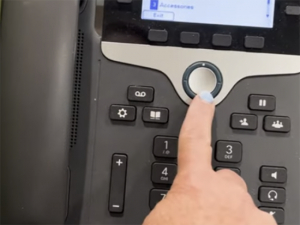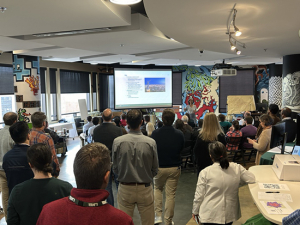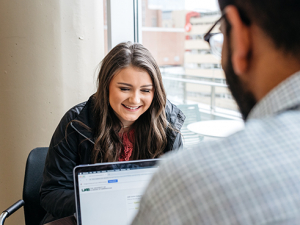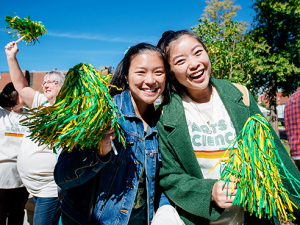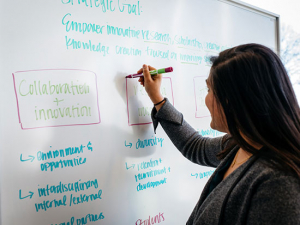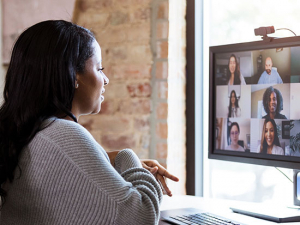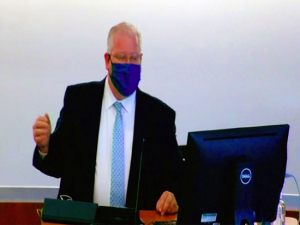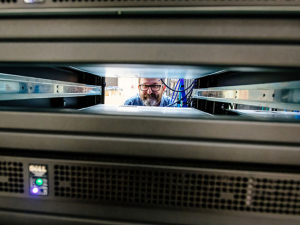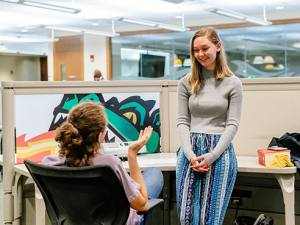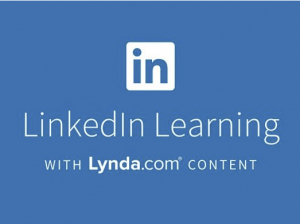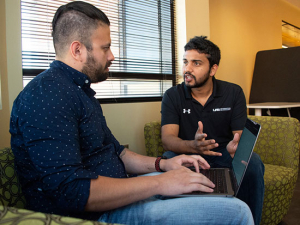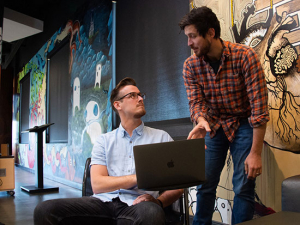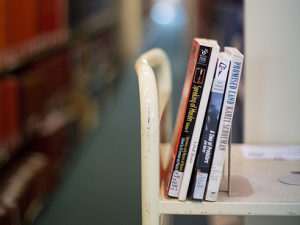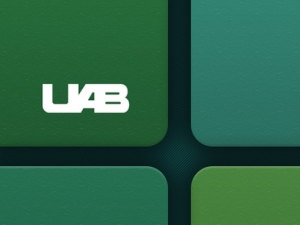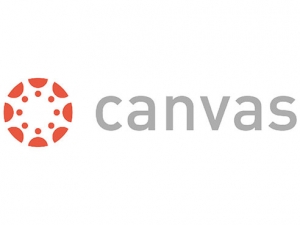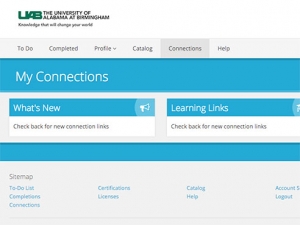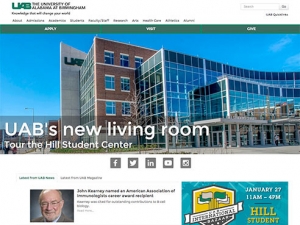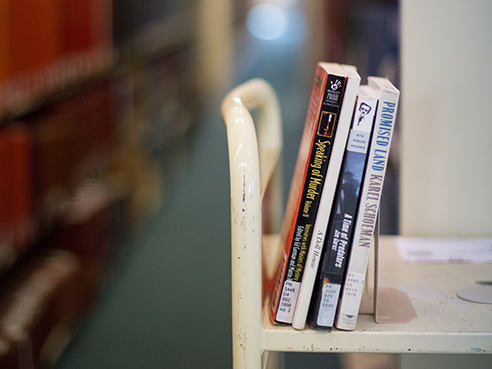 When chemistry Instructor Mitzy Erdmann, Ph.D., was a student at Loyola University, she took a job at the campus bookstore so she could rent her books — but often angled to get them free whenever she could.
When chemistry Instructor Mitzy Erdmann, Ph.D., was a student at Loyola University, she took a job at the campus bookstore so she could rent her books — but often angled to get them free whenever she could.
“It was somewhat soul-crushing,” Erdmann told the UAB Reporter in November 2017. “I’d try to sucker the publishers to give them to me when I did orders over the phone.”
That textbook costs have risen significantly in recent years is no surprise: Applied Educational Systems estimates that costs of course materials have skyrocketed more than 812% in the past 35 years. An annual survey by College Board, a not-for-profit organization that connects students to college success and opportunity, estimates that during the 2018-19 academic year, students who attend public four-year institutions will spend an average of $1,160 on textbooks in just two semesters. The Chronicle of Higher Education and Inside Higher Ed have reported that hungry students are sometimes forced to choose between buying food or paying for tuition and course materials.
Some UAB faculty, funded by grants from the Center for Teaching and Learning and the UAB Bookstore and inspired by the UAB shared value of stewardship, have created their own online assets in Canvas, used rental textbooks or older editions and identified free online resources to save students more than $1.5 million in textbook costs since fall 2017.
“We connect students and faculty with the resources we have available, and this is another way to do it. This new movement of affordable resources builds on what we already do.” |
But you don’t need a grant to start saving students money on instructional materials.
UAB Libraries’ course reserves and subject specialists help faculty reduce textbook costs by doing what libraries do best, says Delores Carlito, information literacy coordinator and liaison for the departments of English and Foreign Languages and Literatures. During the spring semester, UAB Libraries course reserves saved students more than $23,500 for instructional materials.
“Connecting users with resources is what libraries have always done,” she said. “These programs are an extension of that.”
How it works
The first step, Carlito says, is contacting your school’s library liaison. Each liaison is a subject specialist who can connect instructors to library services and collections.
 Delores Carlito, information literacy coordinator and liaison for the departments of English and Foreign Languages and Literatures (left), and Jeff Graveline, associate dean for research and instructional services for UAB Libraries
Delores Carlito, information literacy coordinator and liaison for the departments of English and Foreign Languages and Literatures (left), and Jeff Graveline, associate dean for research and instructional services for UAB Libraries
At the beginning of every semester, Carlito receives a list of books from the UAB Bookstore, detailing each book, down to the edition and publisher, slated for use during an upcoming course. From there, she compares their list to the UAB Libraries catalog. If one of UAB’s libraries has a copy of a listed book, the book is pulled from the shelved collections and placed on reserve; the exact edition is preferred, Carlito says, but if an instructor has specified that an older version is acceptable, it will be included as well. A list of available books for each semester is published online, including those only available as eBooks, and it is searchable by title or course.
Students can check out reserved books for up to two hours at a time, providing them the opportunity to complete readings for class without having to pay for the material. Faculty also can lend UAB Libraries copies of relevant books, even for just one semester, and the book will be returned to them when the course is complete.
Once the available material is placed on reserve, each liaison will provide faculty with a list of available items. Carlito says faculty book donations are particularly helpful. Oftentimes, she says, instructors possess multiple copies of a book — and if one or two of those could find a home in a UAB library, it can reduce the burden of purchasing textbooks on students while also maximizing the resources available on campus.
“Faculty can say, ‘I have three copies of this specific Norton anthology, so I’m going to give the library a copy,” she explained. “They sign some paper work, the book becomes our property and we make it available on reserve.” Another example, she says, are freshman composition books, which can cost students hundreds of dollars but are available 24/7 in course reserves.
Online access
“You want the best work out of students that you can get. You want them to learn, and they can’t do that without the resources they need.” |
If materials aren’t available for physical access via course reserves, liaisons can provide links to library subscription resources to supplement the main course materials, such as journal articles, biographies and other primary sources. UAB’s libraries are home to books, databases, e-journals, digital collections and research guides — and the liaisons are experts in navigating and selecting the most useful supplemental materials for each course and uploading those items to Canvas for student access. This material is already accessible to UAB employees and students — it’s just a matter of taking advantage of it.
A common misconception about using library resources for courses is that it must be all-or-nothing, Carlito continues. If a course can’t provide every necessary material at no cost to the student, instructors shouldn’t become discouraged.
“It doesn’t have to be ‘you either pay or you don’t,’” Carlito said. “Students could pay for a physical copy of a novel, but then be able to access the supplemental material online through UAB Libraries — things like criticism, foreign-language films and multimedia tools, all of which can be inserted in Canvas.”
 Chris Minnix, Ph.D., associate professor of English and director of the Freshman Composition and Developmental Studies program
Chris Minnix, Ph.D., associate professor of English and director of the Freshman Composition and Developmental Studies program
An affordable future
Chris Minnix, Ph.D., associate professor of English and director of the Freshman Composition and Developmental Studies program, is part of the 17-member cohort of faculty that has saved students more than $1.5 million on instructional materials; he began offering a rental option for freshman composition books after reading a March 2018 story in the Chronicle of Higher Education, which said that, despite scary numbers such as the $1.5 trillion Americans owe in student loan debt, a student’s college education can teeter on the fulcrum of a much smaller number — sometimes just a thousand dollars for small-ticket items such as leftover tuition or class fees.
Carlito, who is Minnix’s liaison, approached him about using course reserves for his classes. Together, they ensure the library has copies of each necessary book. He says that, for students who can’t afford to purchase textbooks outright, the course reserves and other library amenities are game-changers.
“If a student can’t afford textbooks, they can go to the library and use the same book they’re using in class,” Minnix said, adding that Fair Use doctrine allows students to make copies of the materials to reference later in class. “They can also use library book scanners to make a personal copy for use in class. Textbooks are expensive — if a student can’t purchase one, there are still resources for them.”
“If a student can’t afford textbooks, they can go to the library and use the same book they’re using in class.” |
Both Carlito and Jeff Graveline, associate dean for research and instructional services for UAB Libraries, are excited that a renewed focus on affordable instructional materials means more instructors are seeking out their library liaisons for expert help. The end result, Carlito says, is that students have more freedom to succeed academically when they worry less financially.
“This is really what librarians have done for years,” said Graveline, who once was the library liaison for the Collat School of Business. “We connect students and faculty with the resources we have available, and this is another way to do it. This new movement of affordable resources builds on what we already do.”
“You want the best work out of students that you can get,” Carlito echoed. “You want them to learn, and they can’t do that without the resources they need.”

